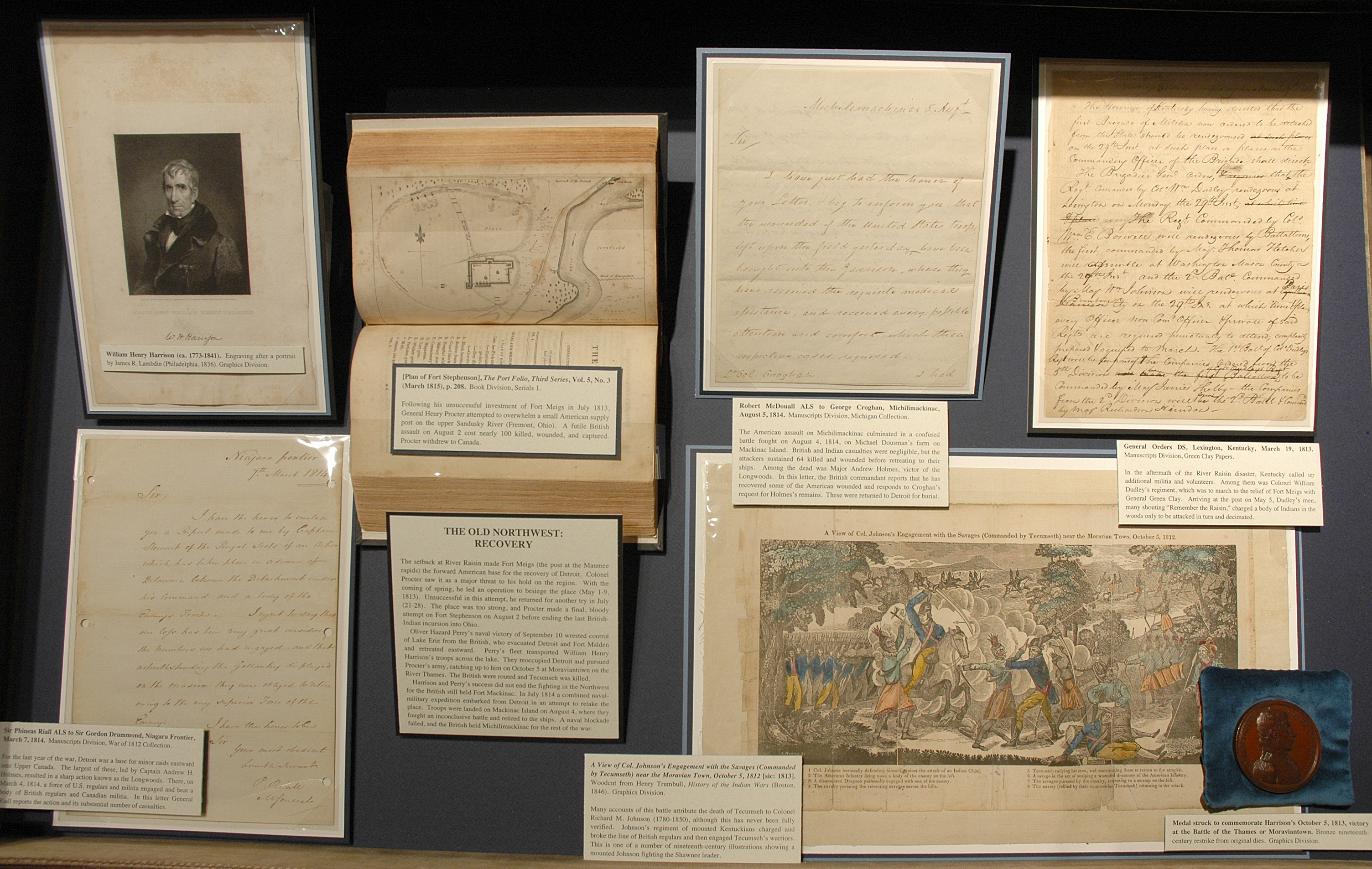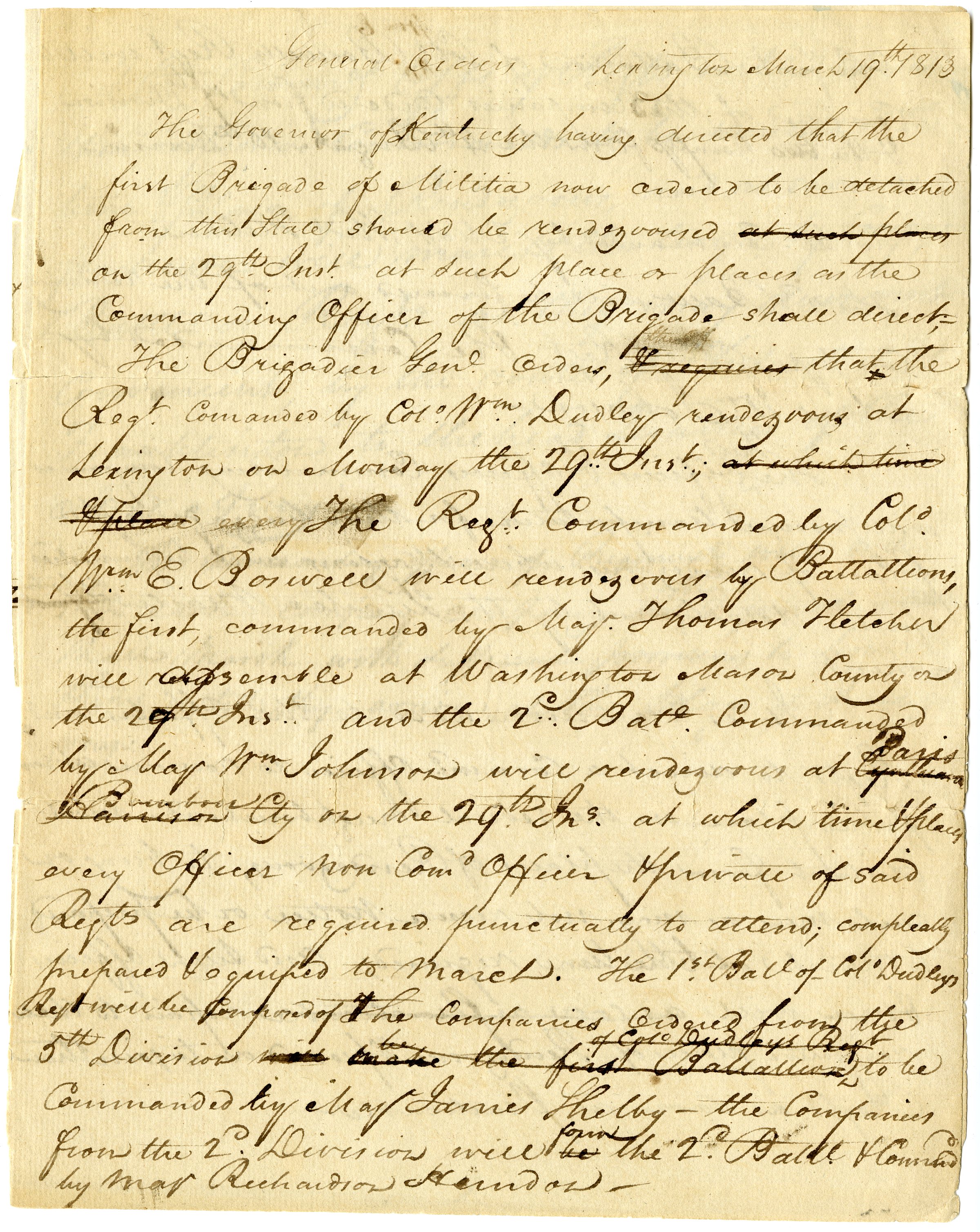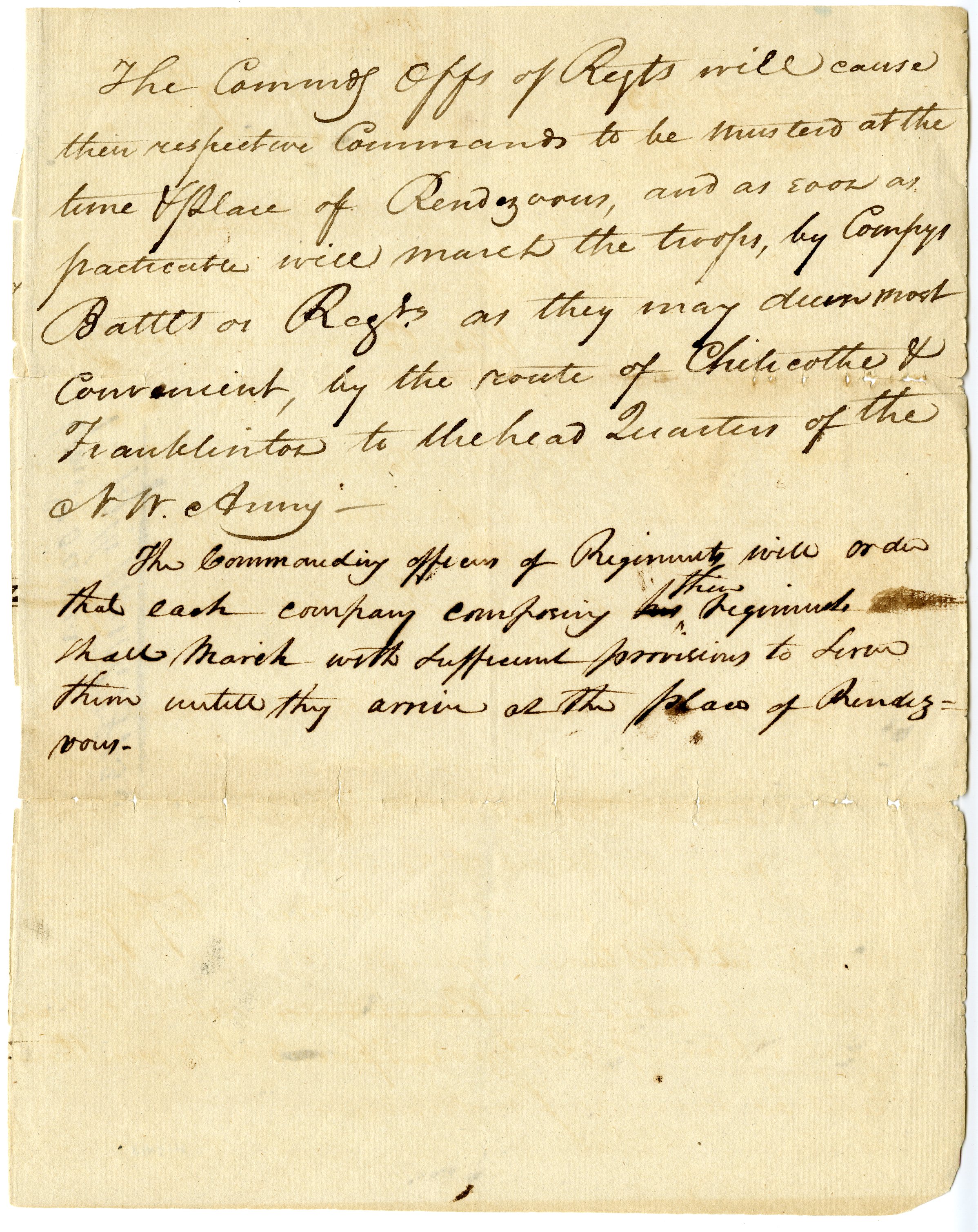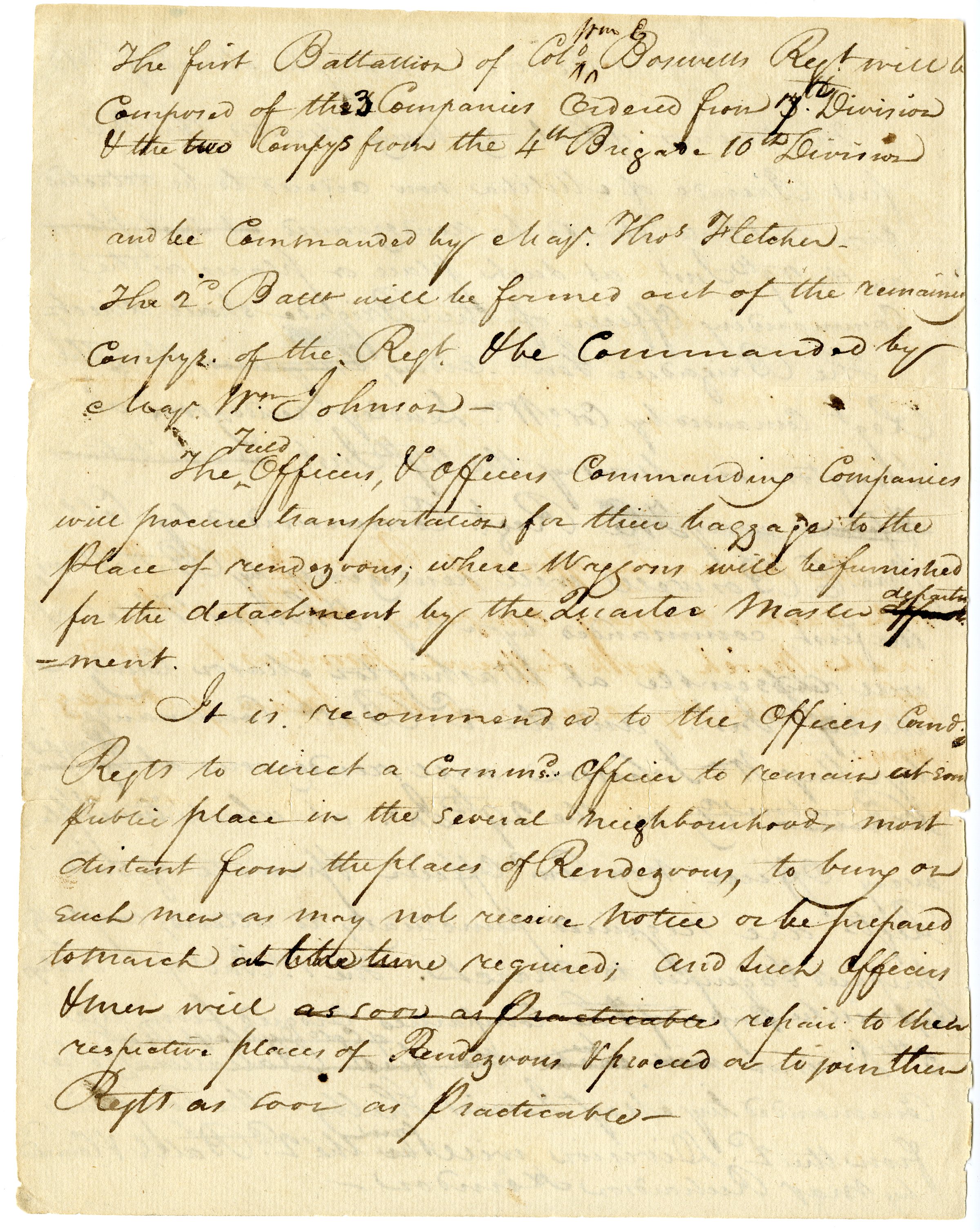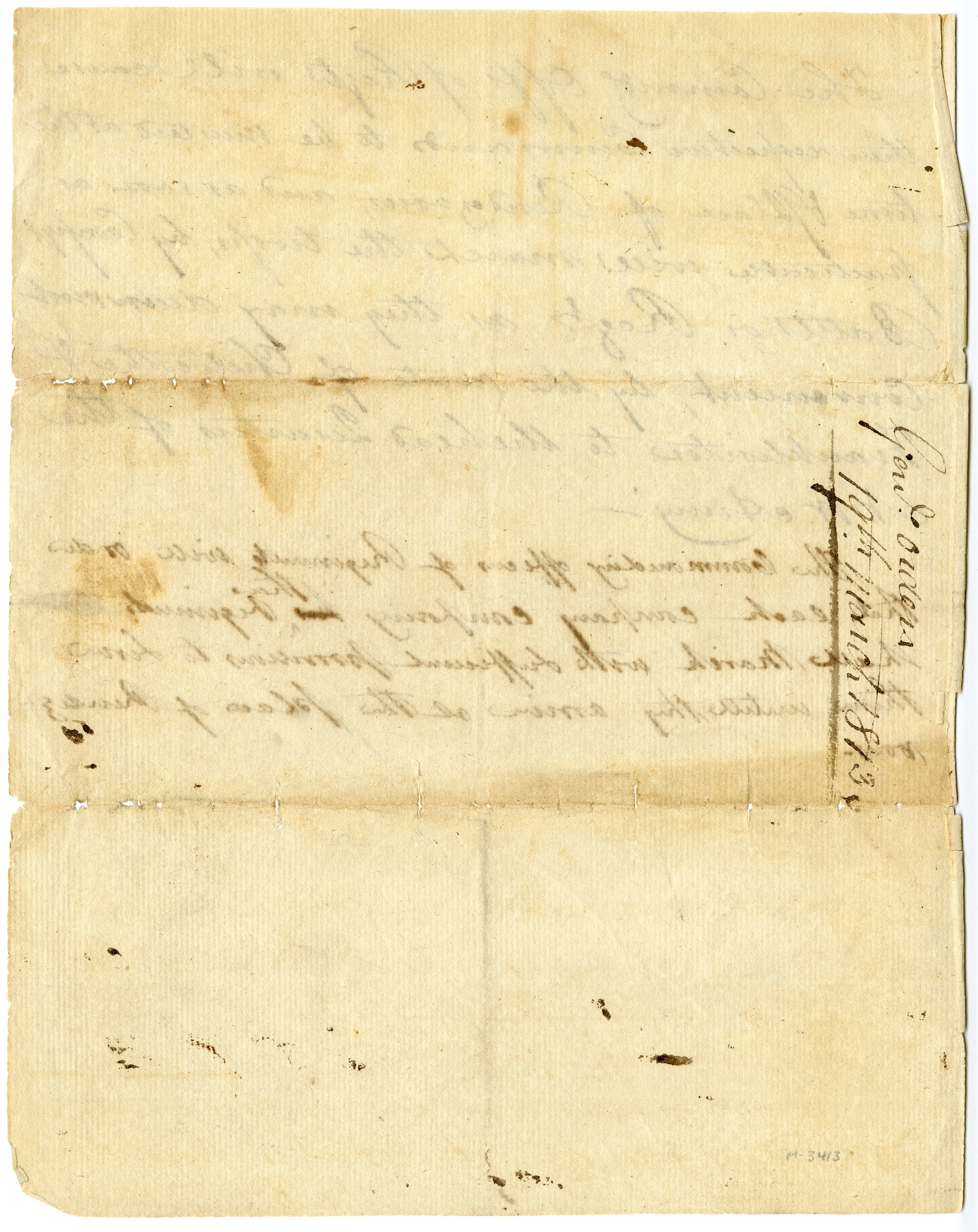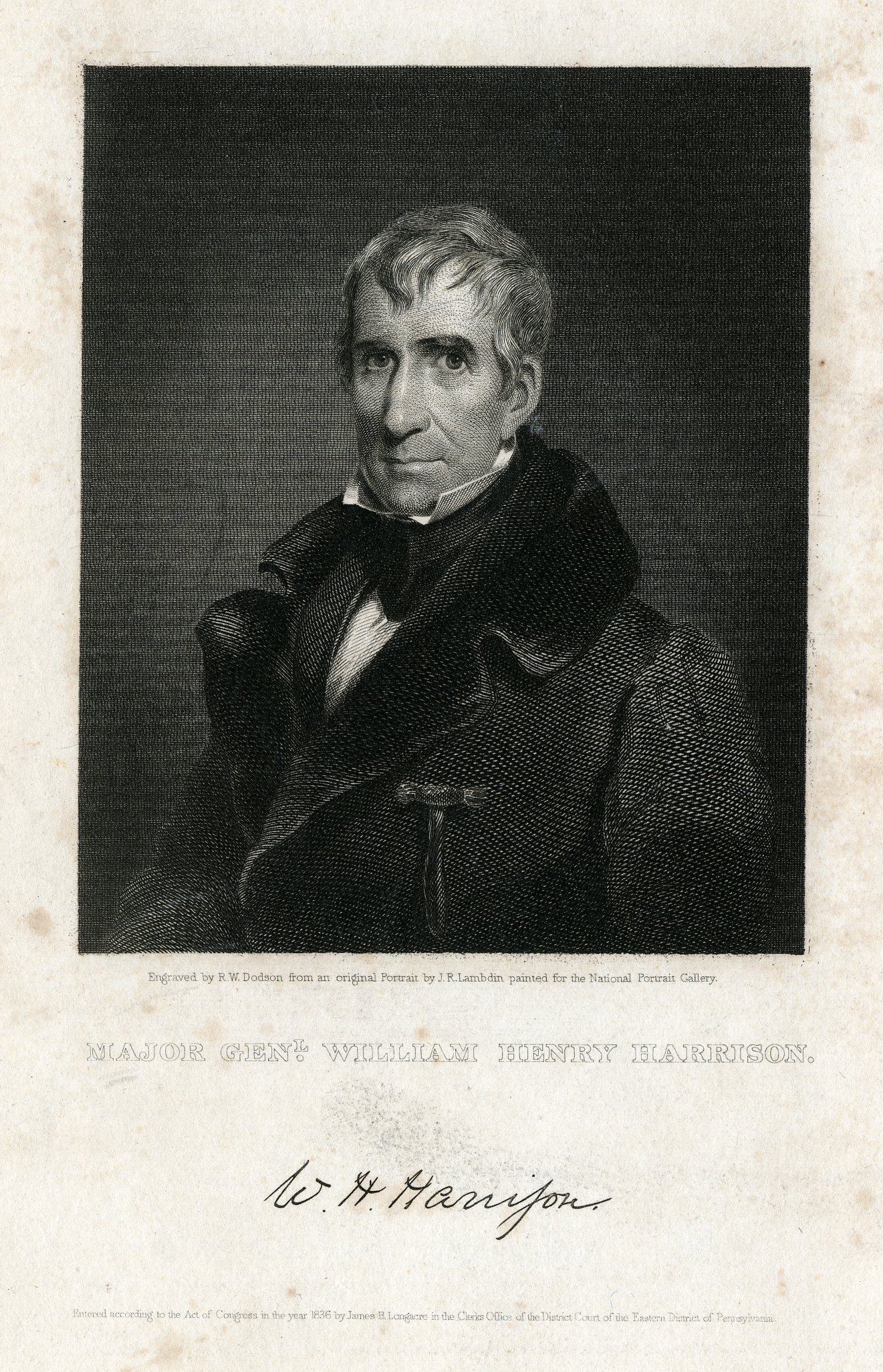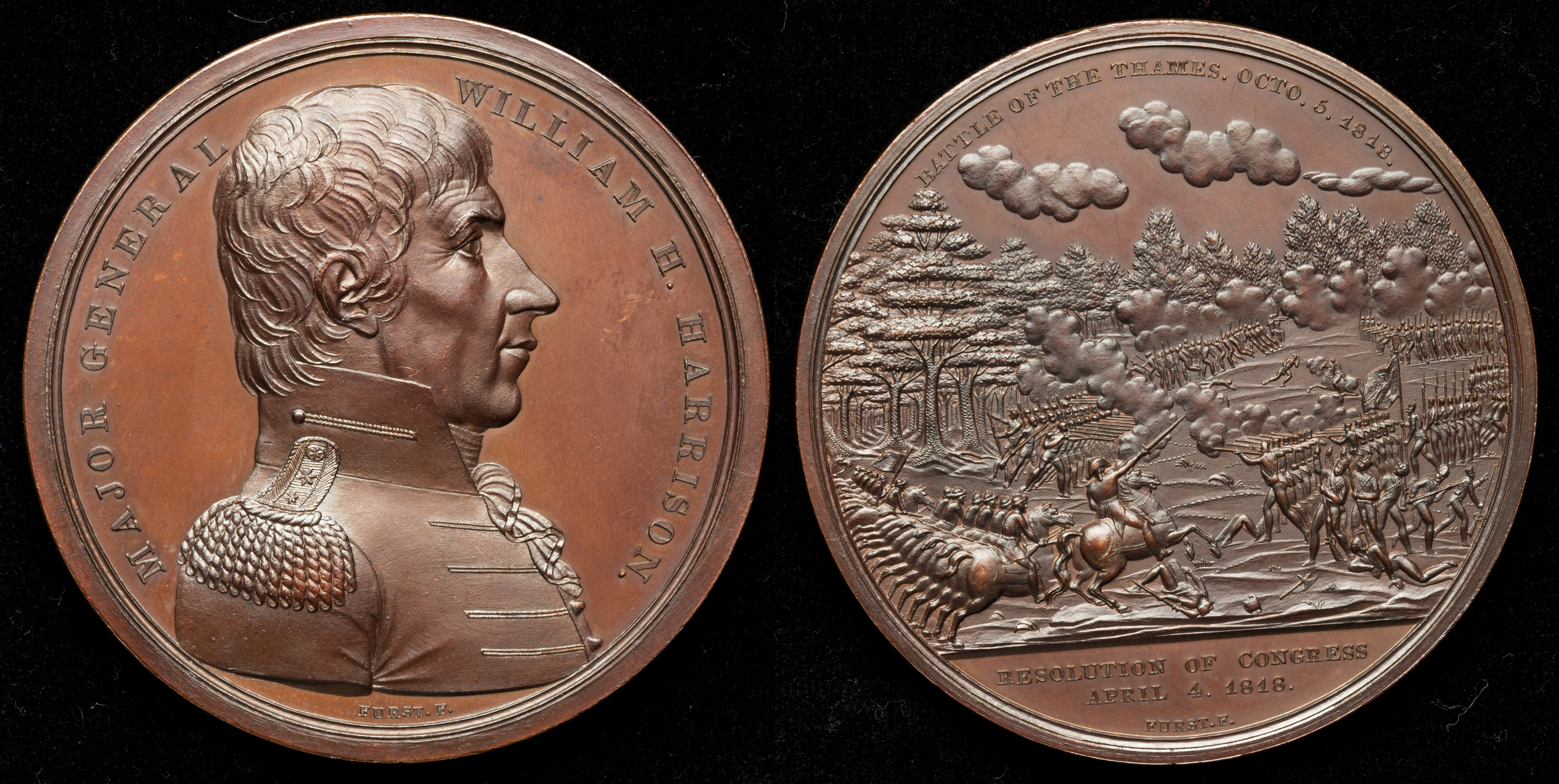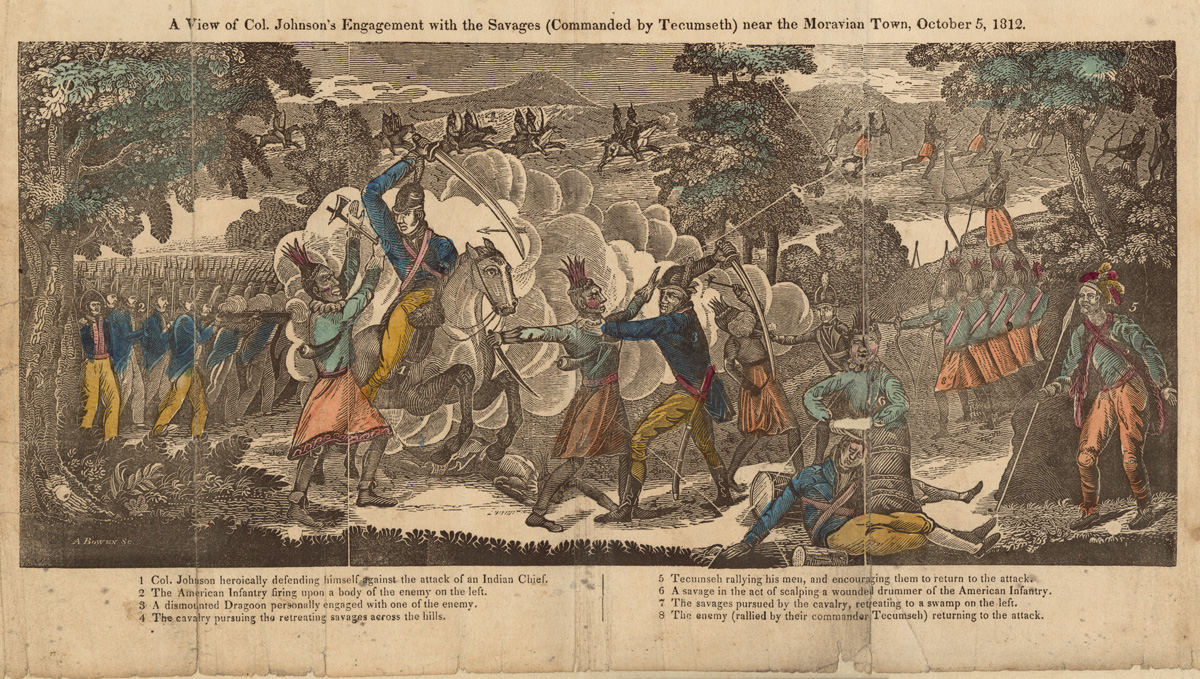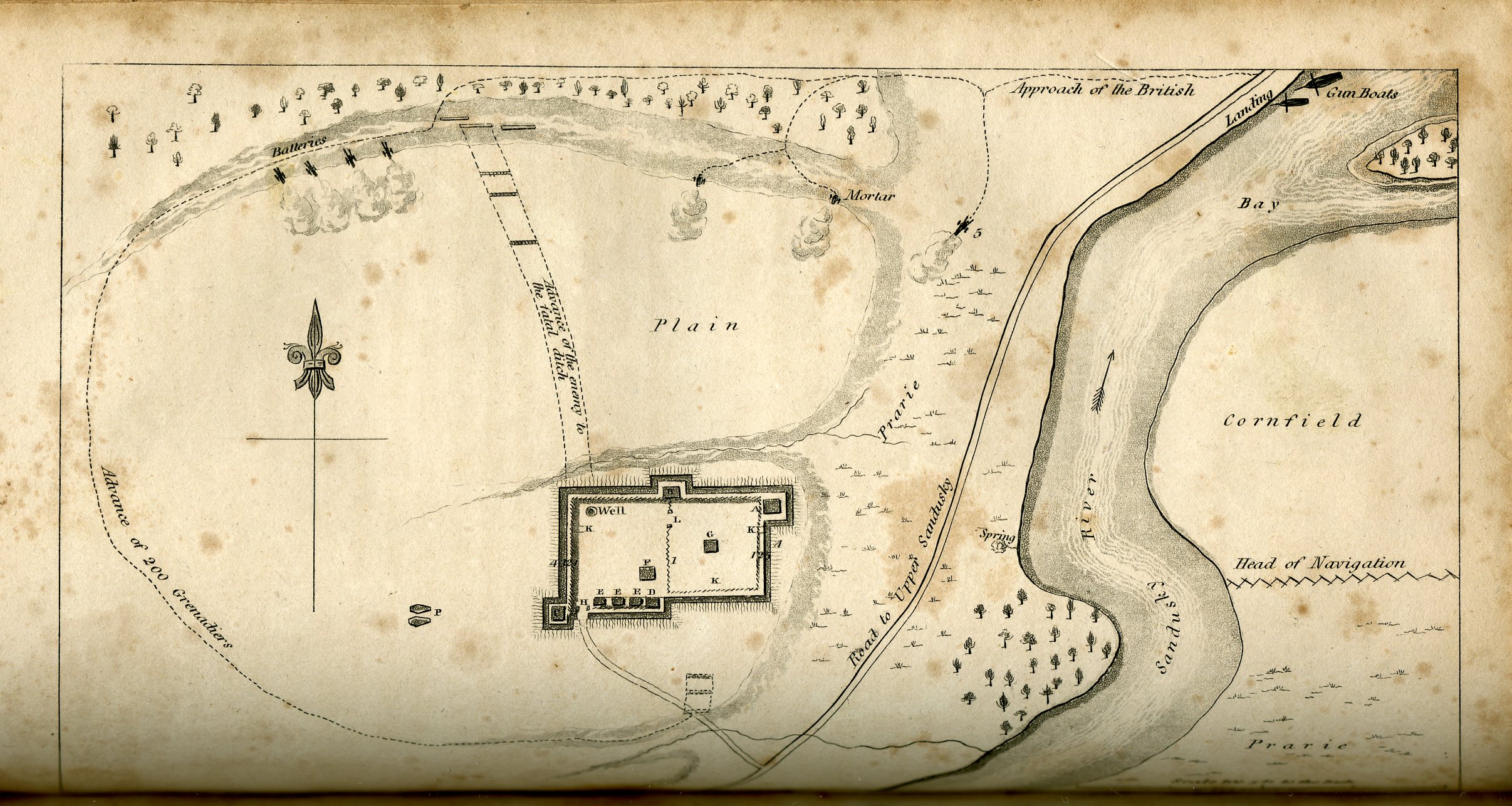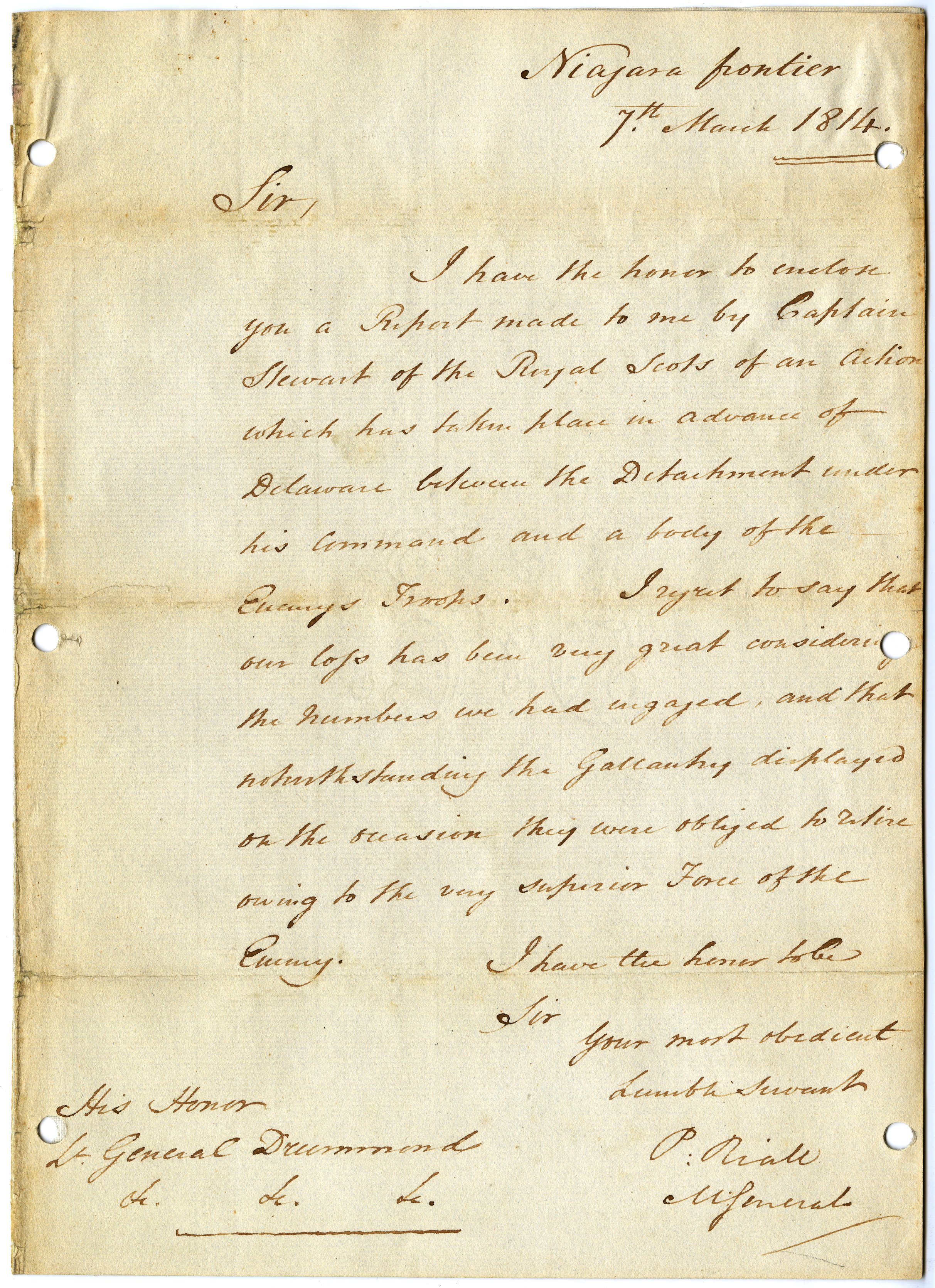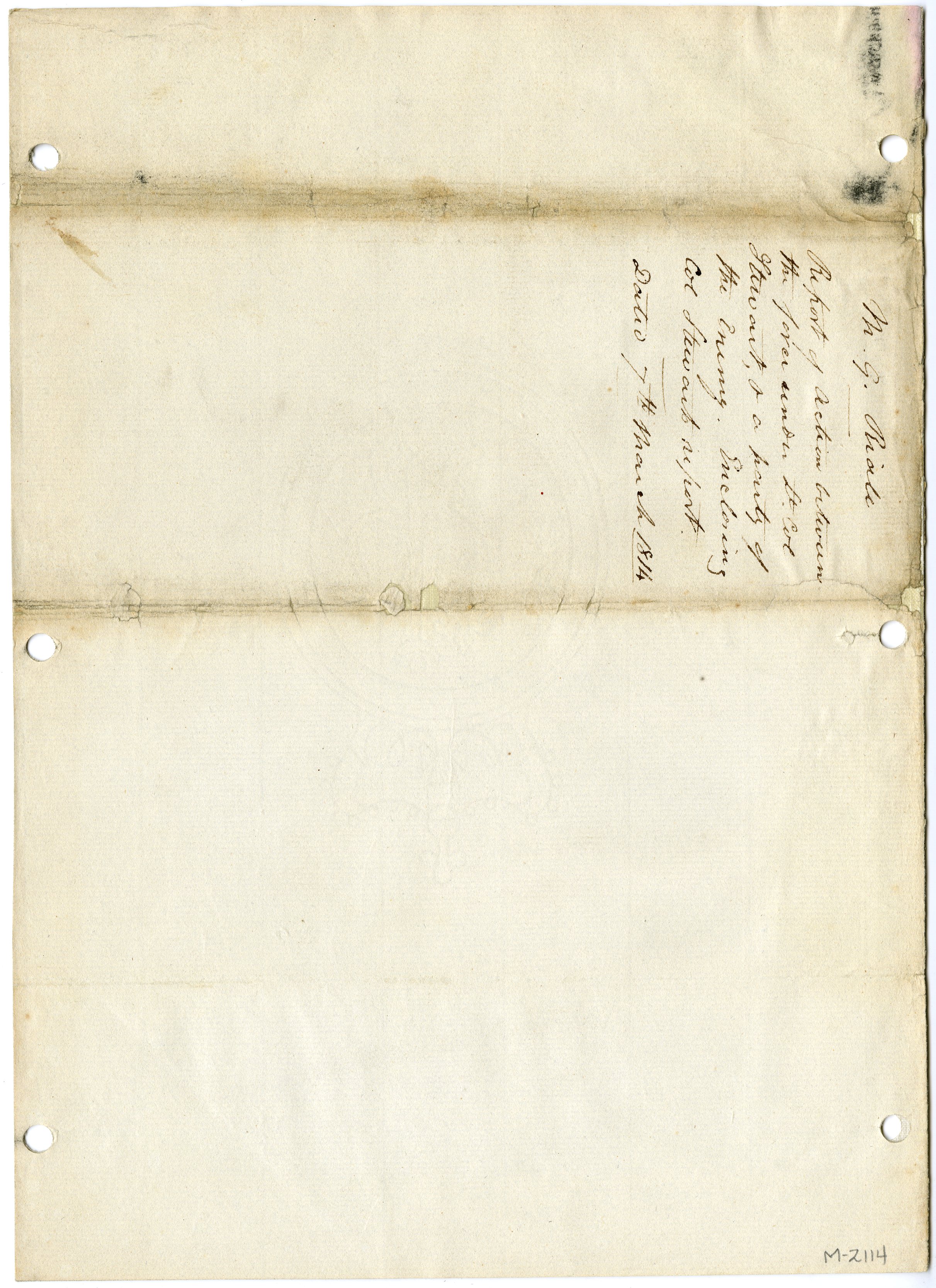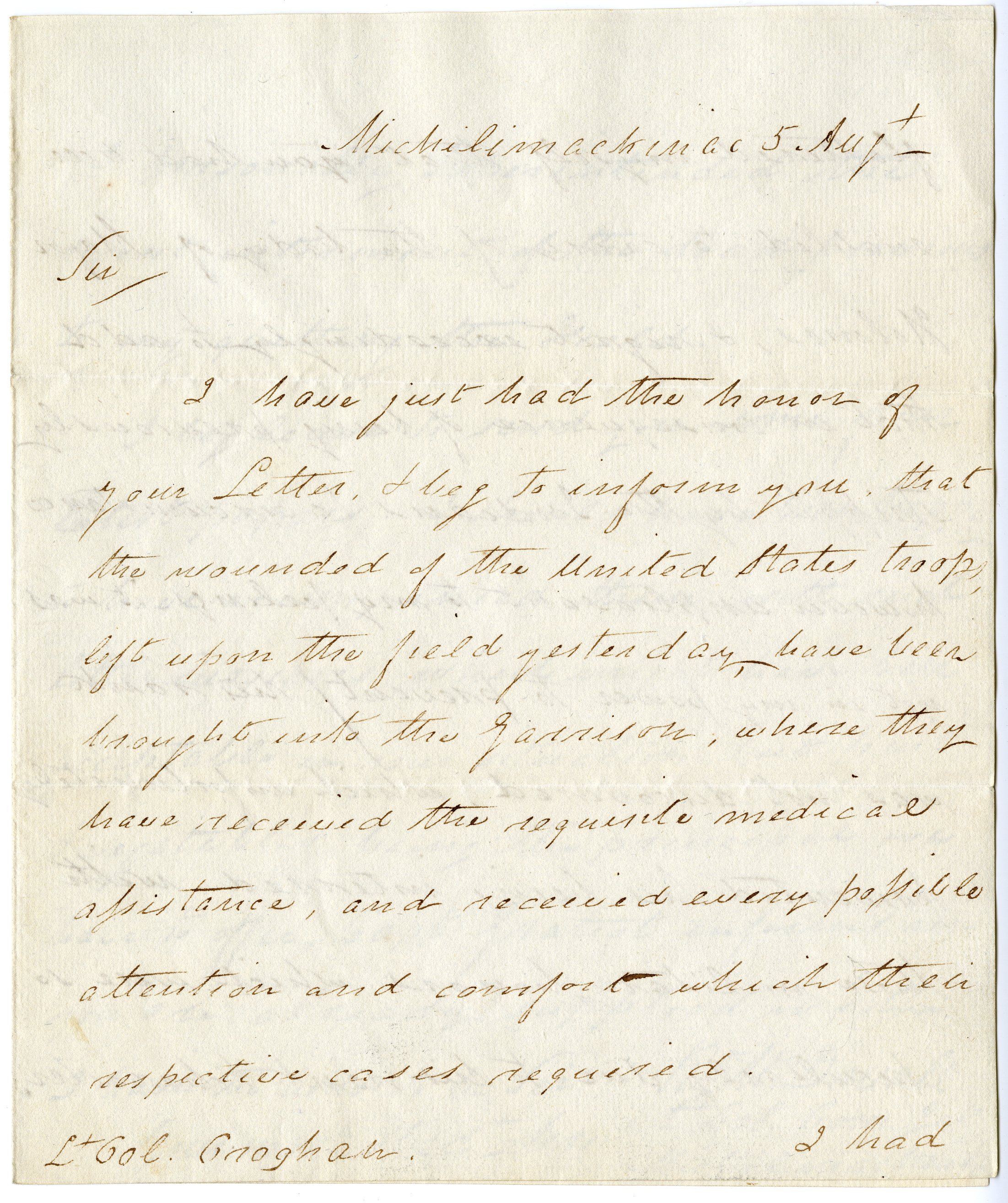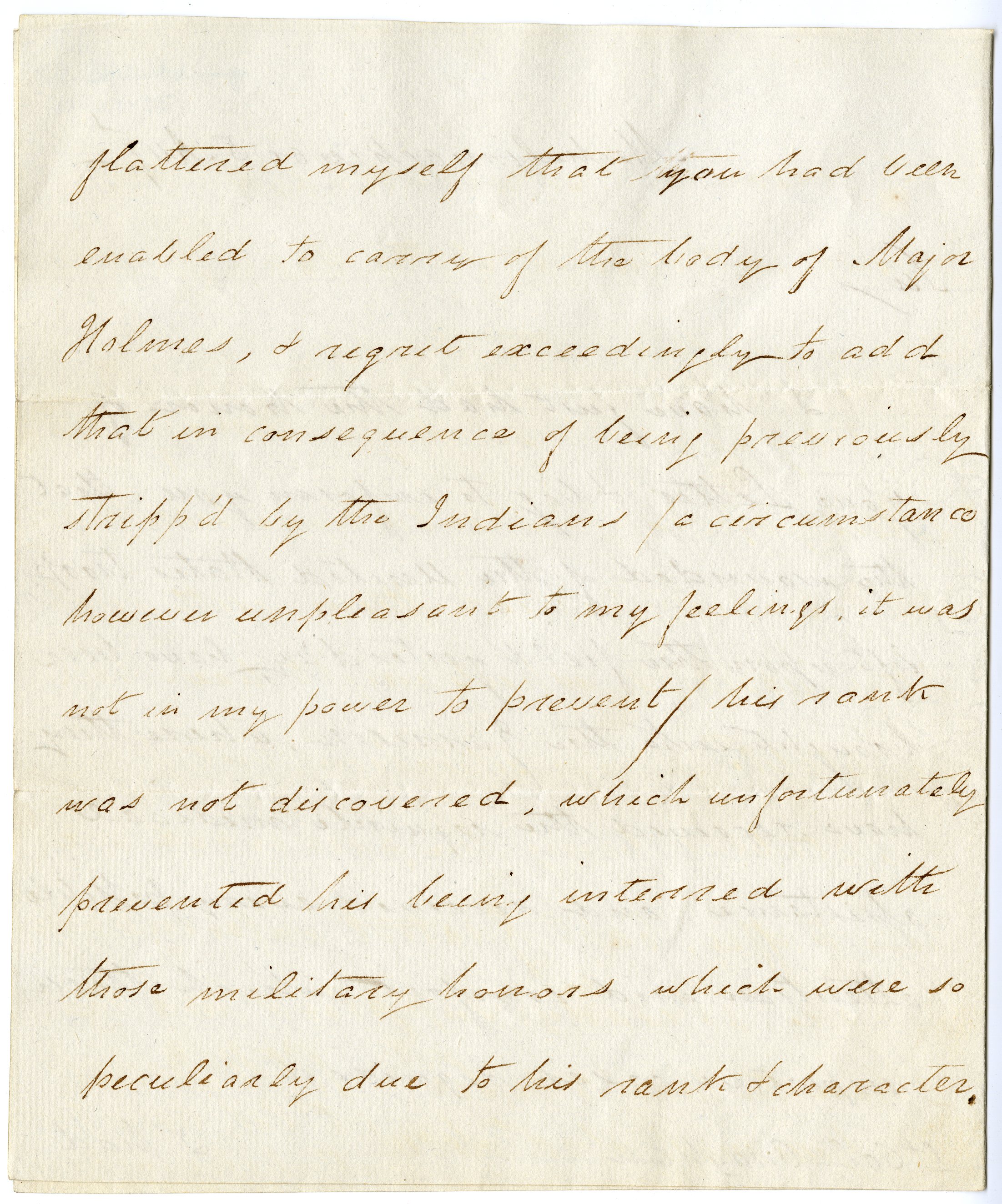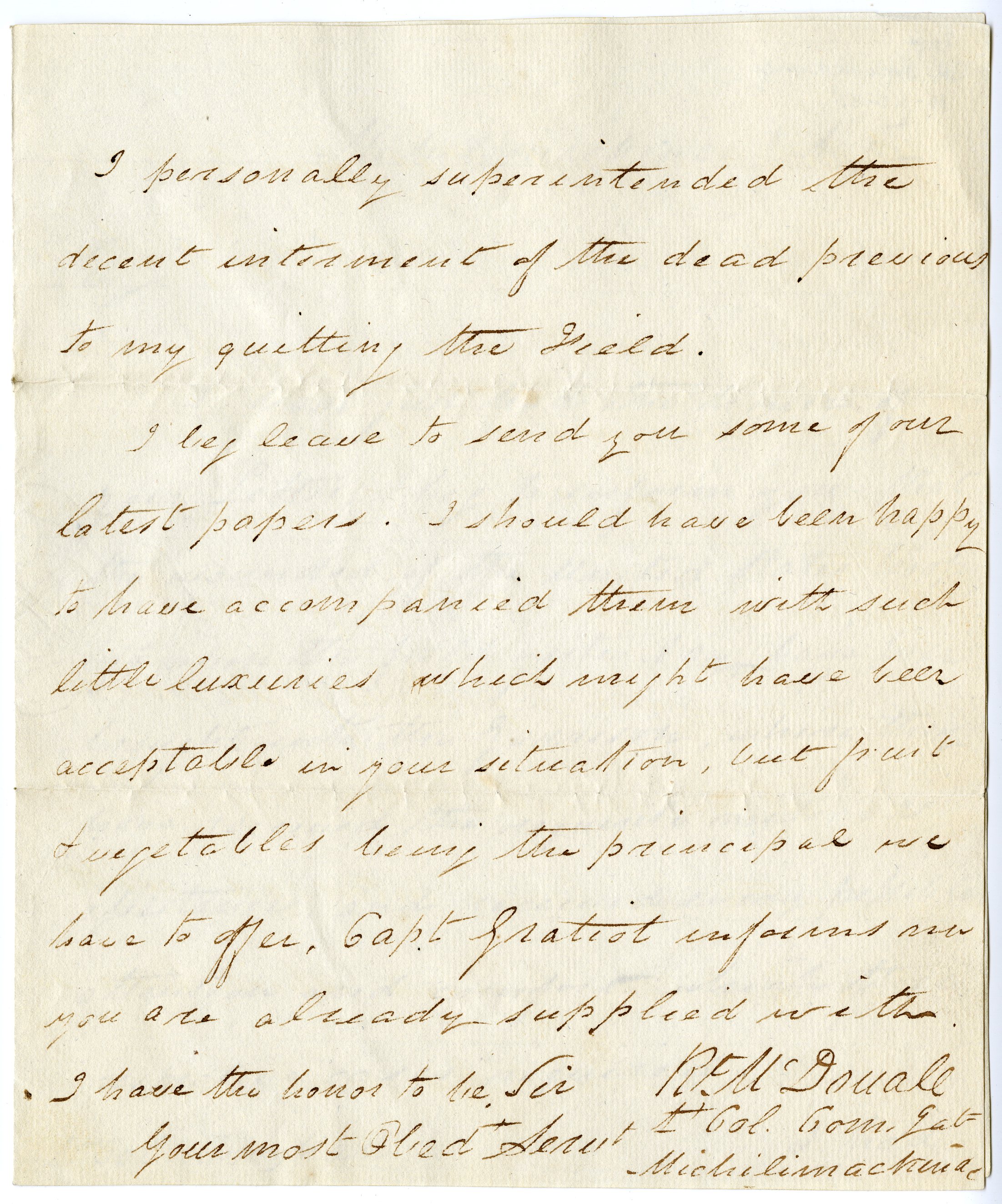The War of 1812: A Bicentennial Exhibition, Case 7
Case 7: The Old Northwest: Recovery
The setback at River Raisin made Fort Meigs (the post at the Maumee rapids) the forward American base for the recovery of Detroit. Colonel Procter saw it as a major threat to his hold on the region. With the coming of spring, he led an operation to besiege the place (May 1-9, 1813). Unsuccessful in this attempt, he returned for another try in July (21-28). The place was too strong, and Procter made a final, bloody attempt on Fort Stephenson on August 2 before ending the last British-Indian incursion into Ohio.
Oliver Hazard Perry’s naval victory of September 10 wrested control of Lake Erie from the British, who evacuated Detroit and Fort Malden and retreated eastward. Perry’s fleet transported William Henry Harrison’s troops across the lake. They reoccupied Detroit and pursued Procter’s army, catching up to him on October 5 at Moraviantown on the River Thames. The British were routed and Tecumseh was killed.
Harrison and Perry’s success did not end the fighting in the Northwest for the British still held Fort Mackinac. In July 1814 a combined naval-military expedition embarked from Detroit in an attempt to retake the place. Troops were landed on Mackinac Island on August 4, where they fought an inconclusive battle and retired to the ships. A naval blockade failed, and the British held Michilimackinac for the rest of the war.
General Orders DS, Lexington, Kentucky, March 19, 1813. Manuscripts Division, Green Clay Papers.
In the aftermath of the River Raisin disaster, Kentucky called up additional militia and volunteers. Among them was Colonel William Dudley’s regiment, which was to march to the relief of Fort Meigs with General Green Clay. Arriving at the post on May 5, Dudley’s men, many shouting “Remember the Raisin,” charged a body of Indians in the woods only to be attacked in turn and decimated.
William Henry Harrison (ca. 1773-1841). Engraving after a portrait by James R. Lambdin (Philadelphia, 1836). Graphics Division.
Medal struck to commemorate Harrison’s October 5, 1813, victory at the Battle of the Thames or Moraviantown. Bronze nineteenth-century restrike from original dies. Graphics Division.
A View of Col. Johnson’s Engagement with the Savages (Commanded by Tecumseth) near the Moravian Town, October 5, 1812 [sic: 1813]. Woodcut from Henry Trumbull, History of the Indian Wars (Boston, 1846). Graphics Division.
Many accounts of this battle attribute the death of Tecumseh to Colonel Richard M. Johnson (1780-1850), although this has never been fully verified. Johnson’s regiment of mounted Kentuckians charged and broke the line of British regulars and then engaged Tecumseh’s warriors. This is one of a number of nineteenth-century illustrations showing a mounted Johnson fighting the Shawnee leader.
[Plan of Fort Stephenson], The Port Folio, Third Series, Vol. 5, No. 3 (March 1815), p. 208. Book Division, Serials 1.
Following his unsuccessful investment of Fort Meigs in July 1813, General Henry Procter attempted to overwhelm a small American supply post on the upper Sandusky River (Fremont, Ohio). A futile British assault on August 2 cost nearly 100 killed, wounded, and captured. Procter withdrew to Canada.
Sir Phineas Riall ALS to Sir Gordon Drummond, Niagara Frontier, March 7, 1814. Manuscripts Division, War of 1812 Collection.
For the last year of the war, Detroit was a base for minor raids eastward into Upper Canada. The largest of these, led by Captain Andrew H. Holmes, resulted in a sharp action known as the Longwoods. There, on March 4, 1814, a force of U.S. regulars and militia engaged and beat a body of British regulars and Canadian militia. In this letter General Riall reports the action and its substantial number of casualties.
Robert McDouall ALS to George Croghan, Michilimackinac, August 5, 1814. Manuscripts Division, Michigan Collection.
The American assault on Michilimackinac culminated in a confused battle fought on August 4, 1814, on Michael Dousman’s farm on Mackinac Island. British and Indian casualties were negligible, but the attackers sustained 64 killed and wounded before retreating to their ships. Among the dead was Major Andrew Holmes, victor of the Longwoods. In this letter, the British commandant reports that he has recovered some of the American wounded and responds to Croghan’s request for Holmes’s remains. These were returned to Detroit for burial.

